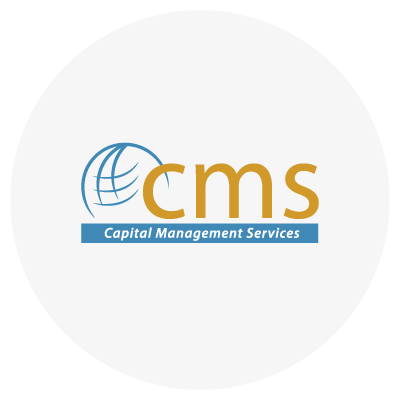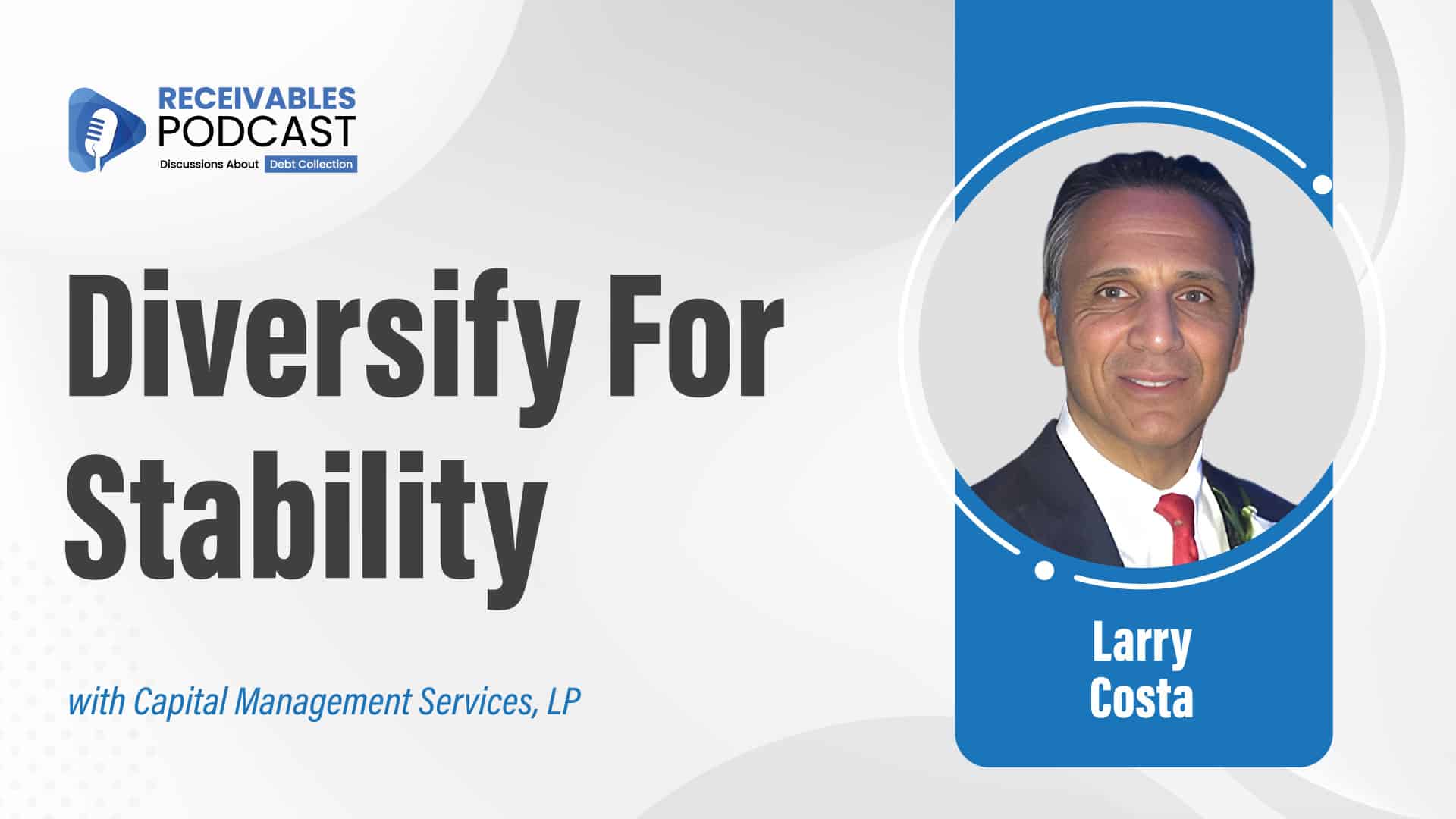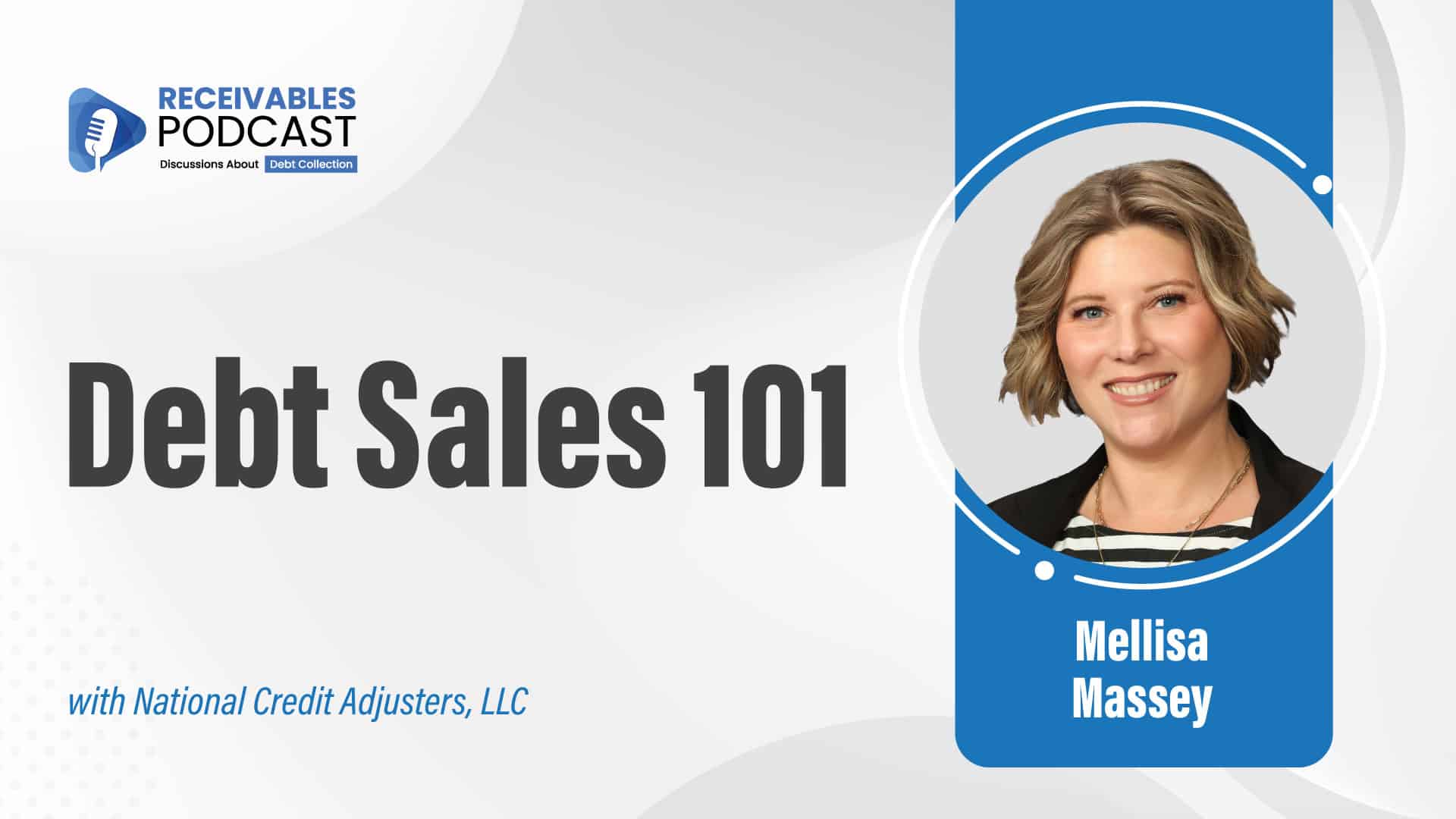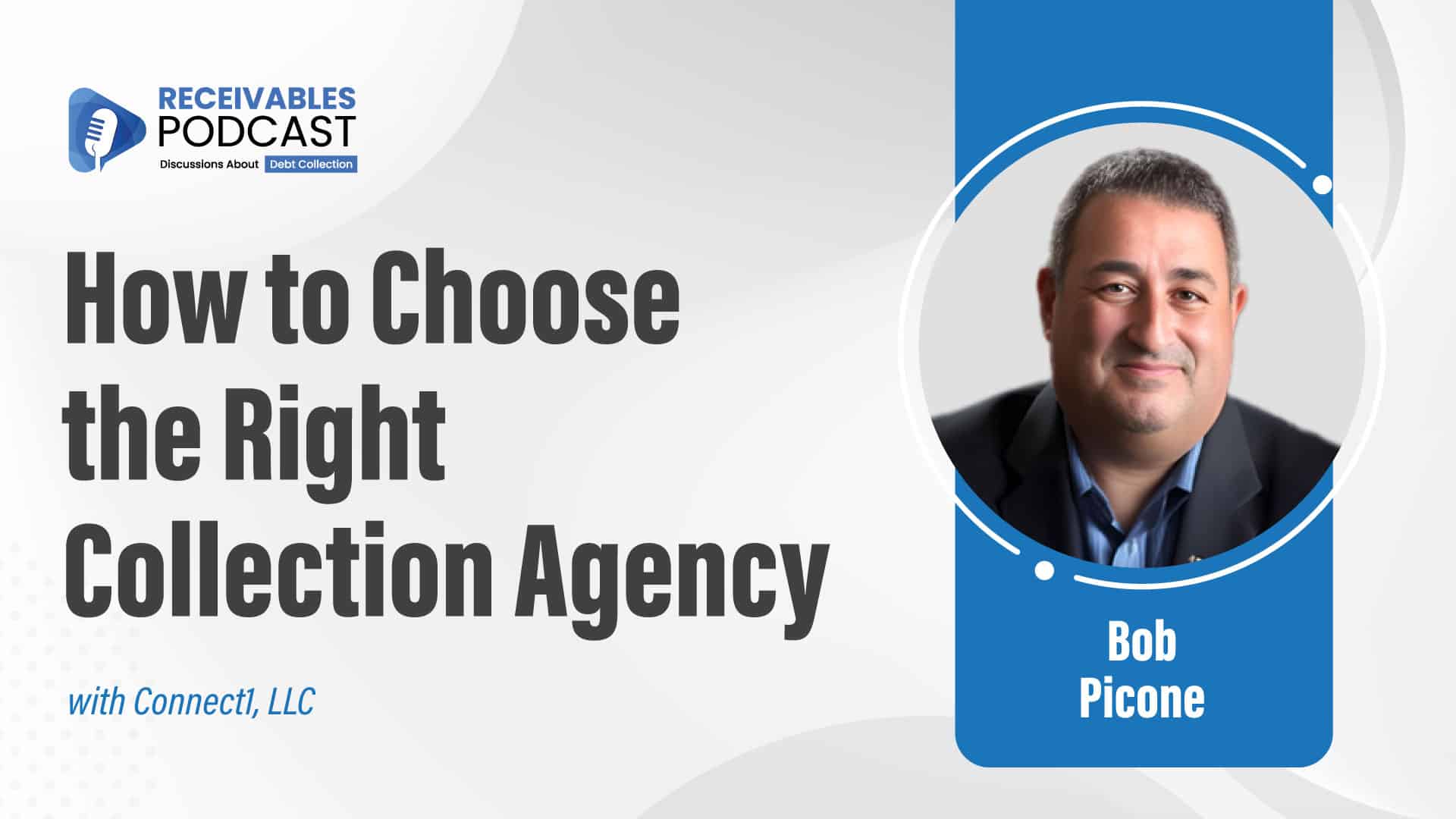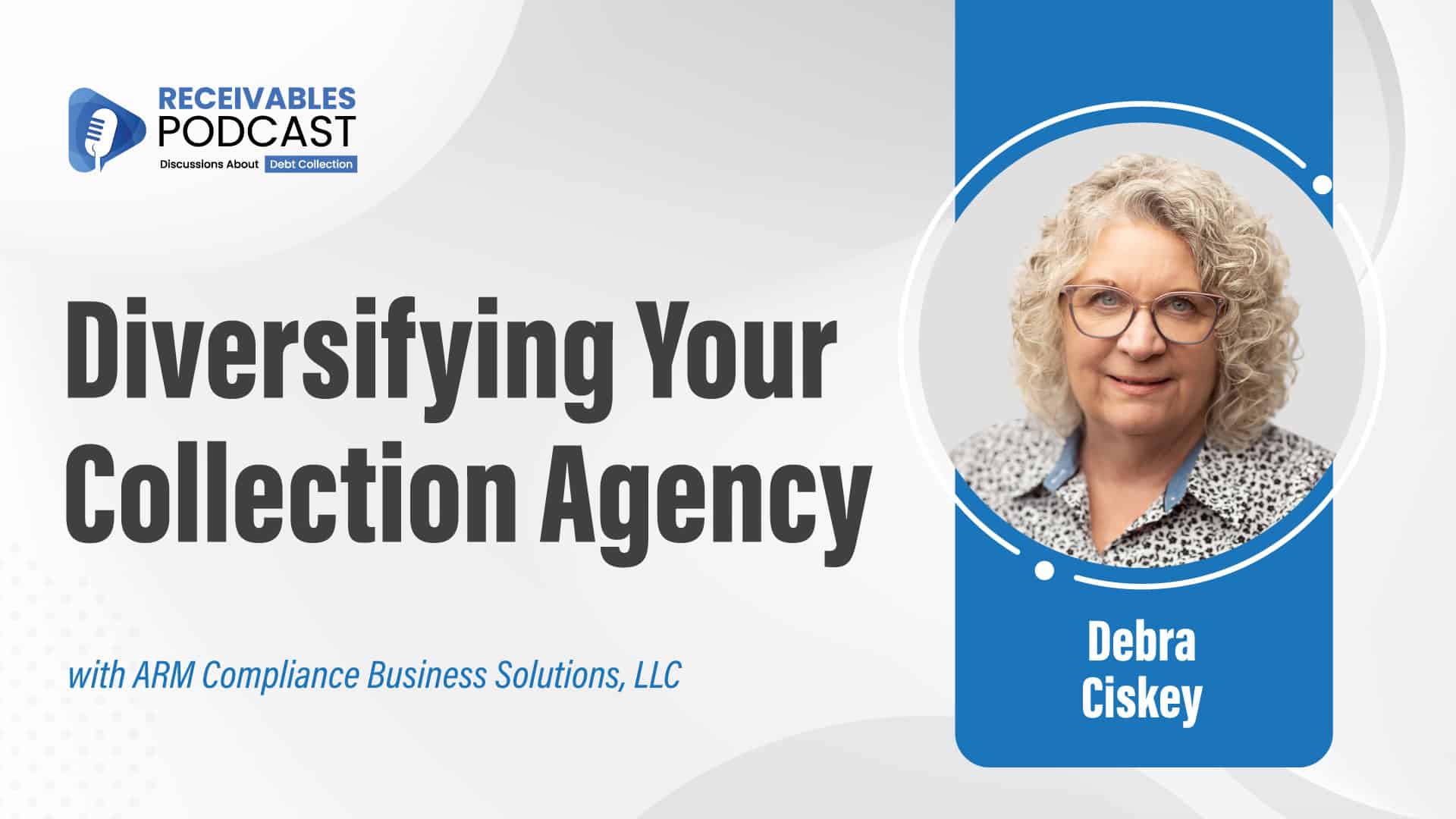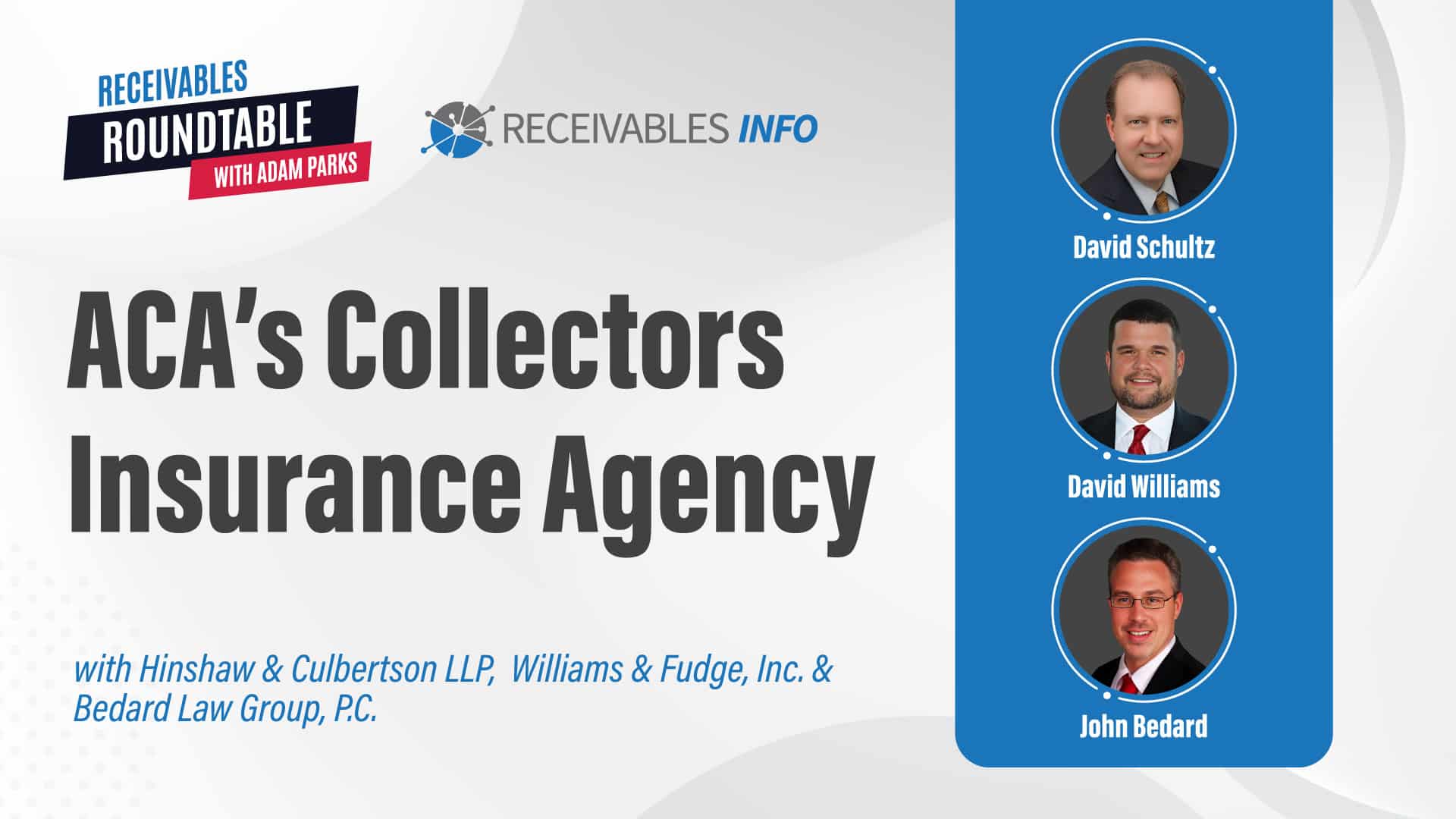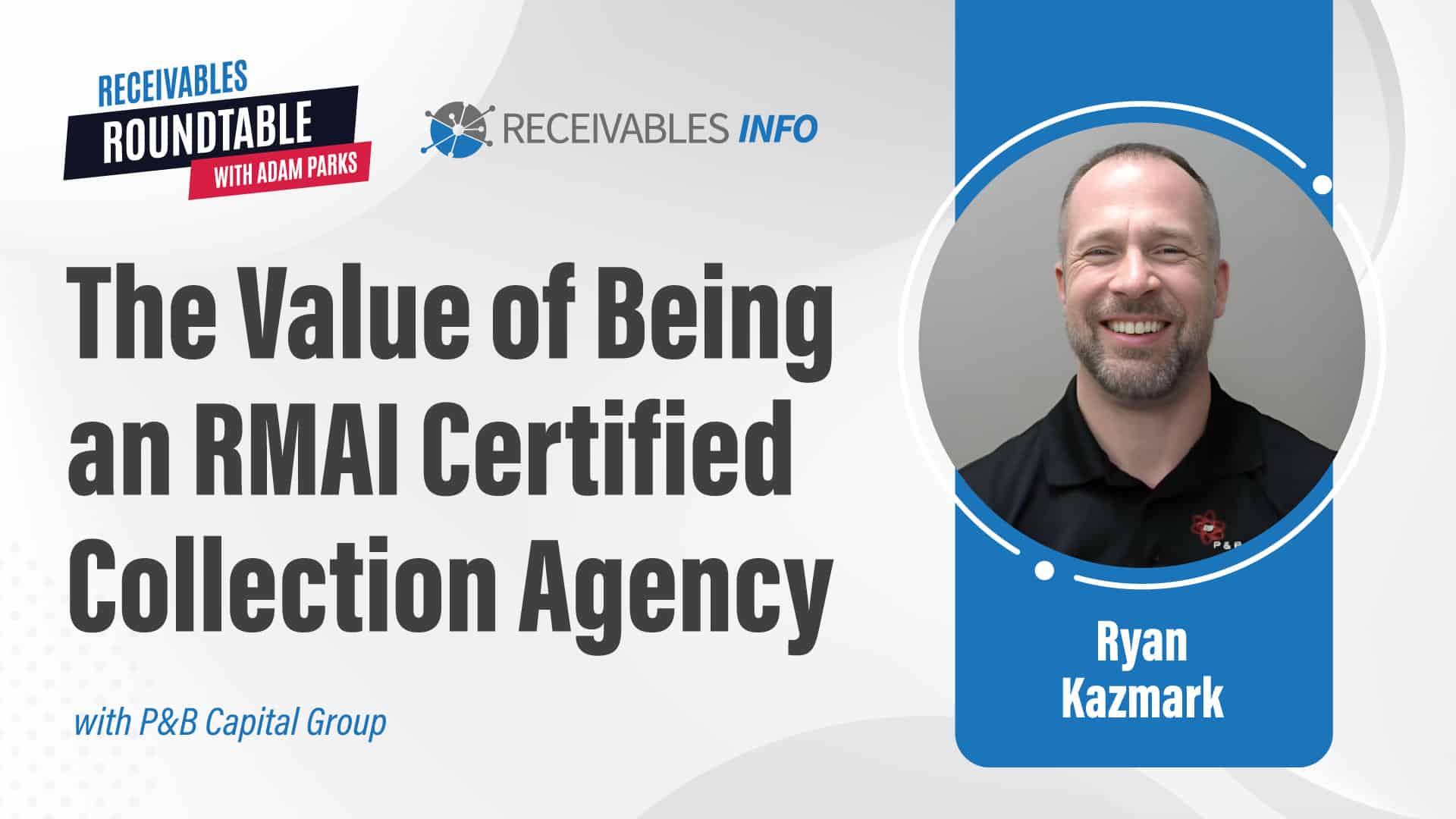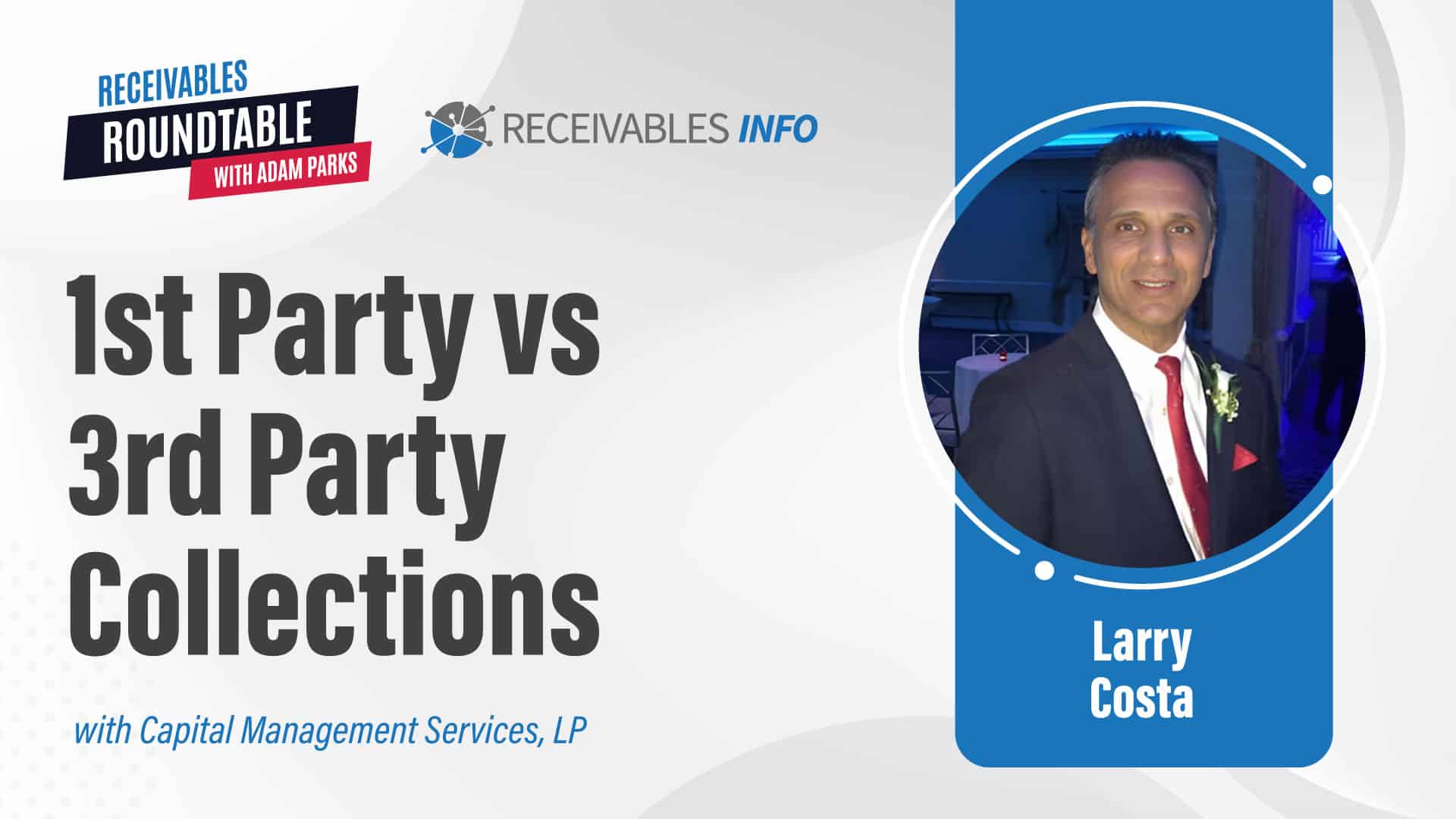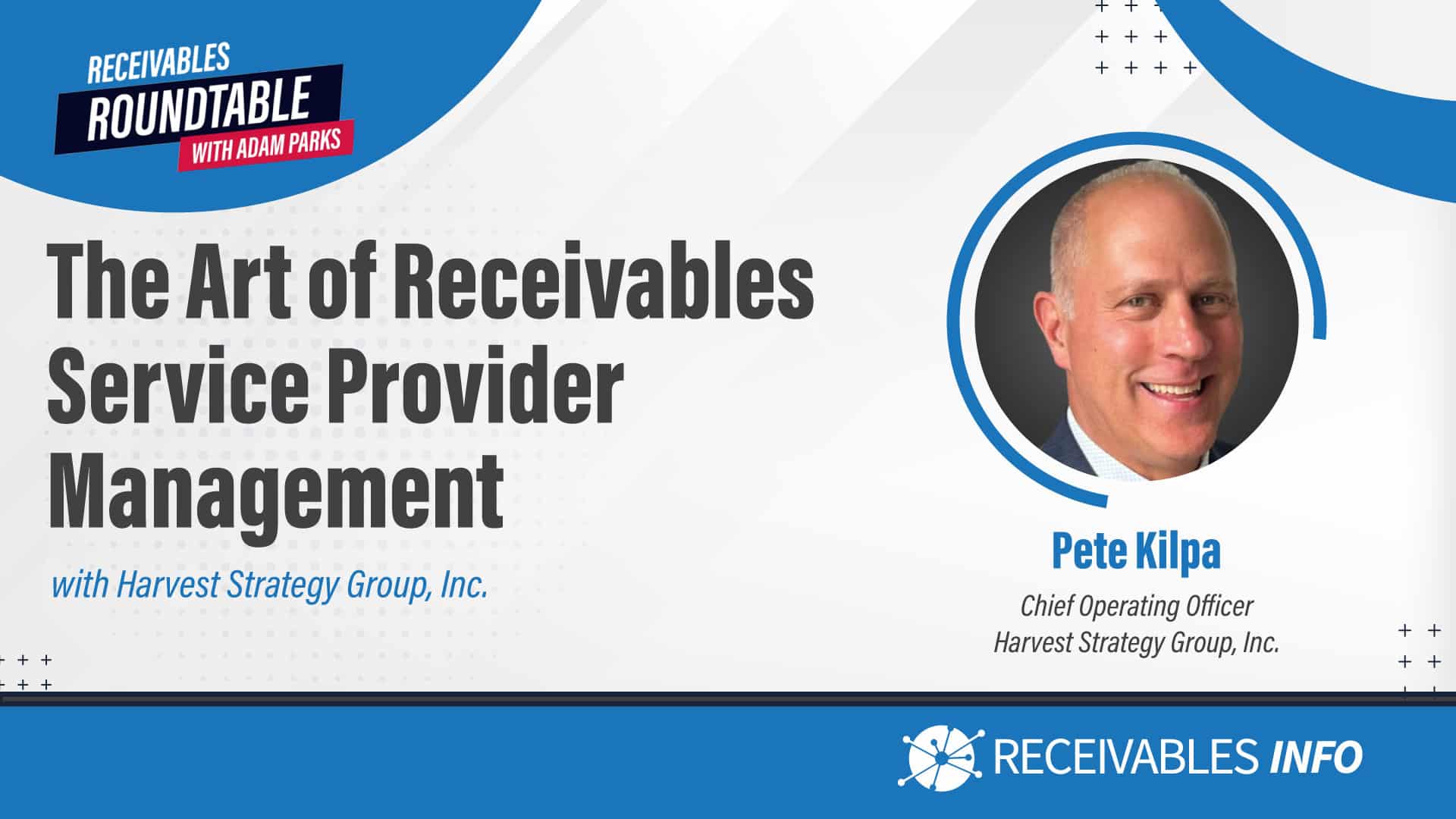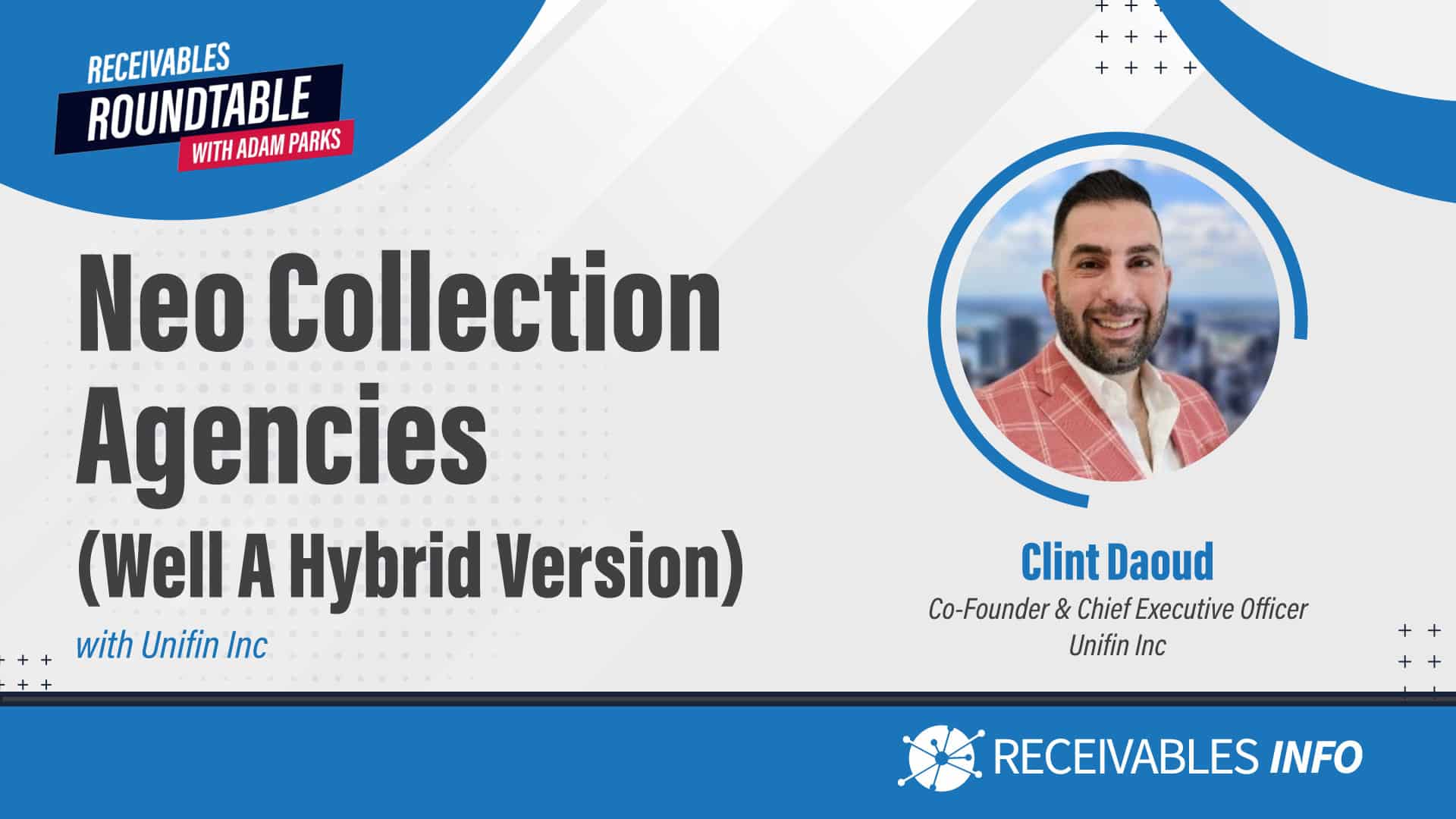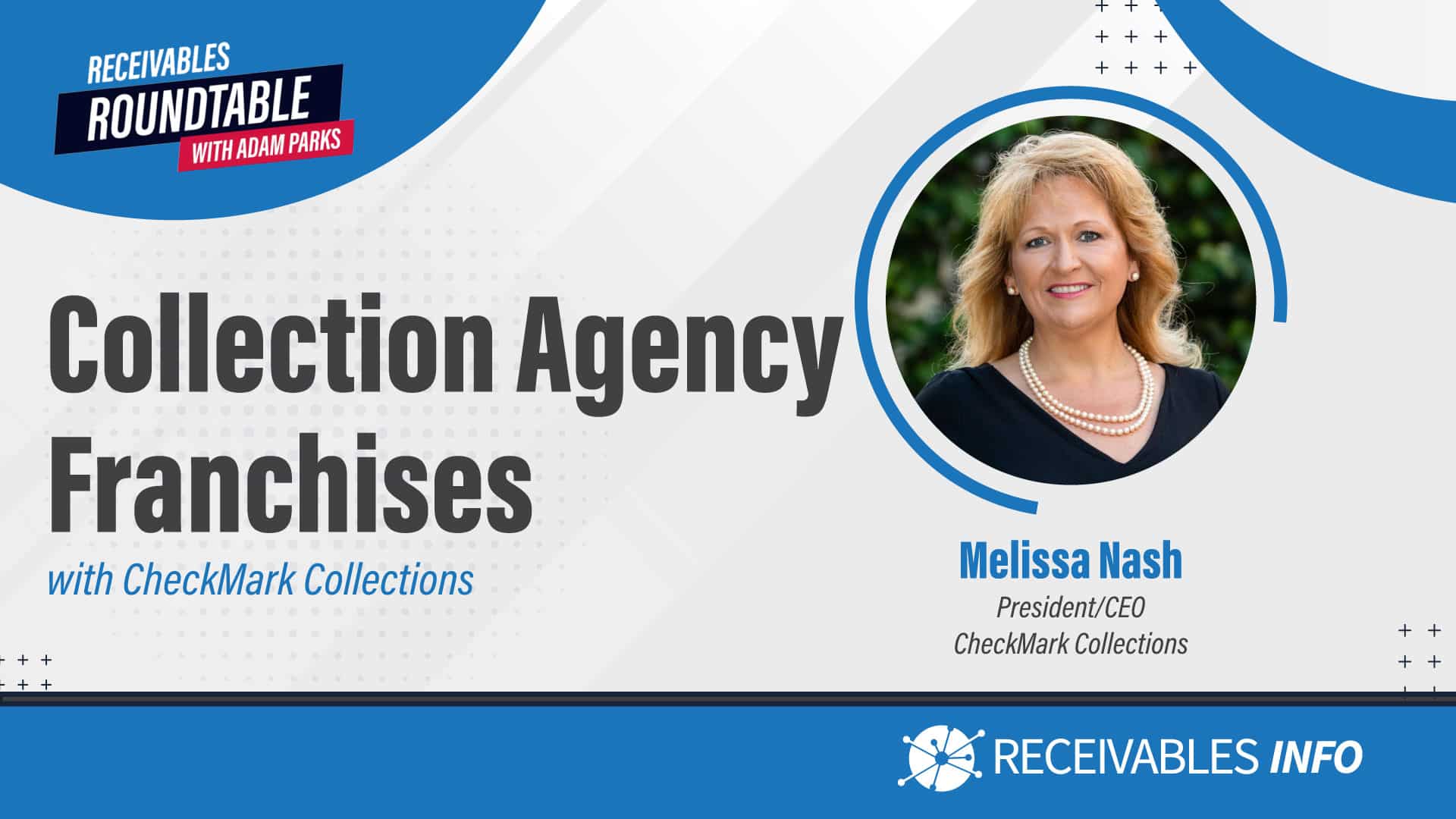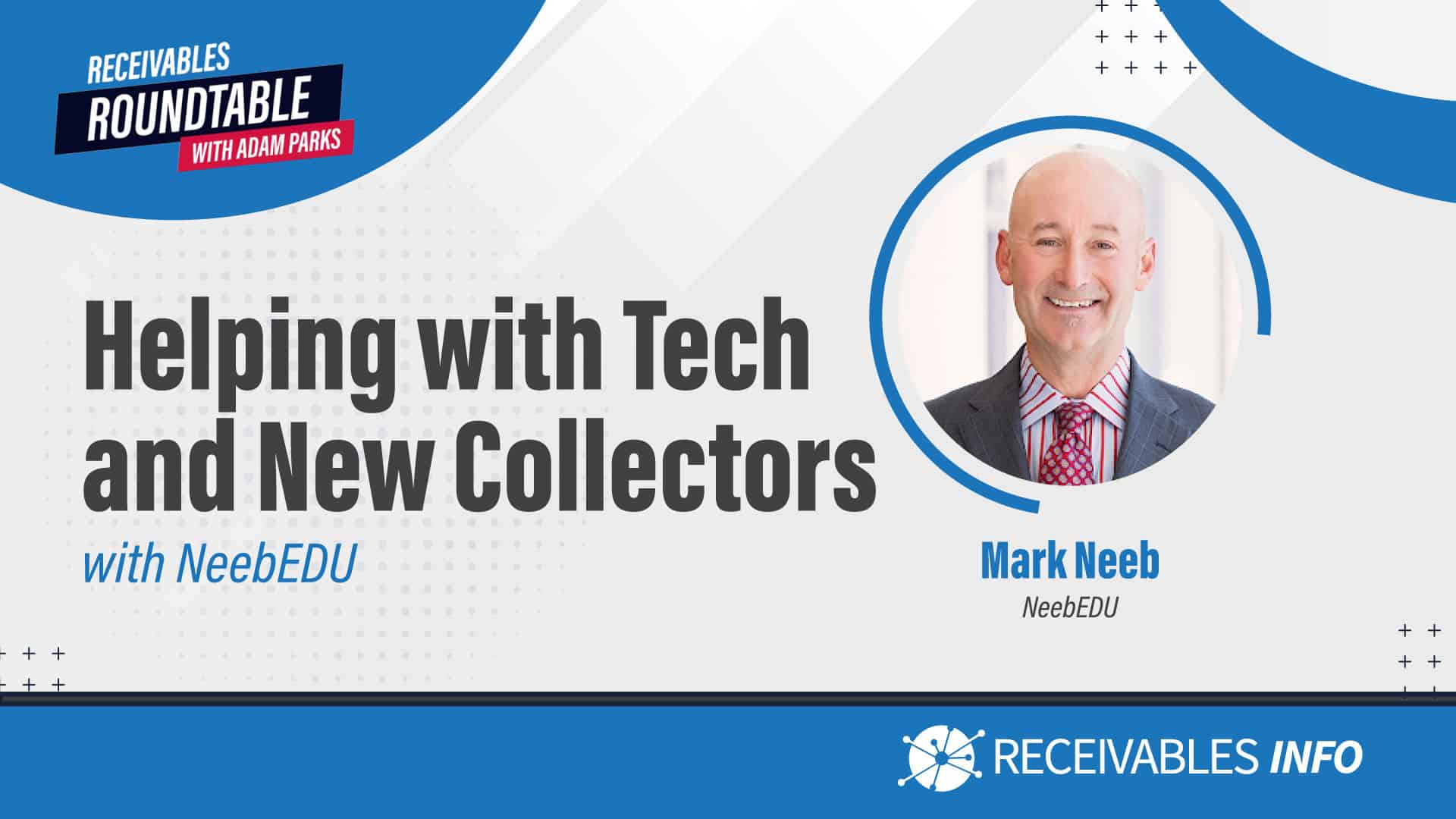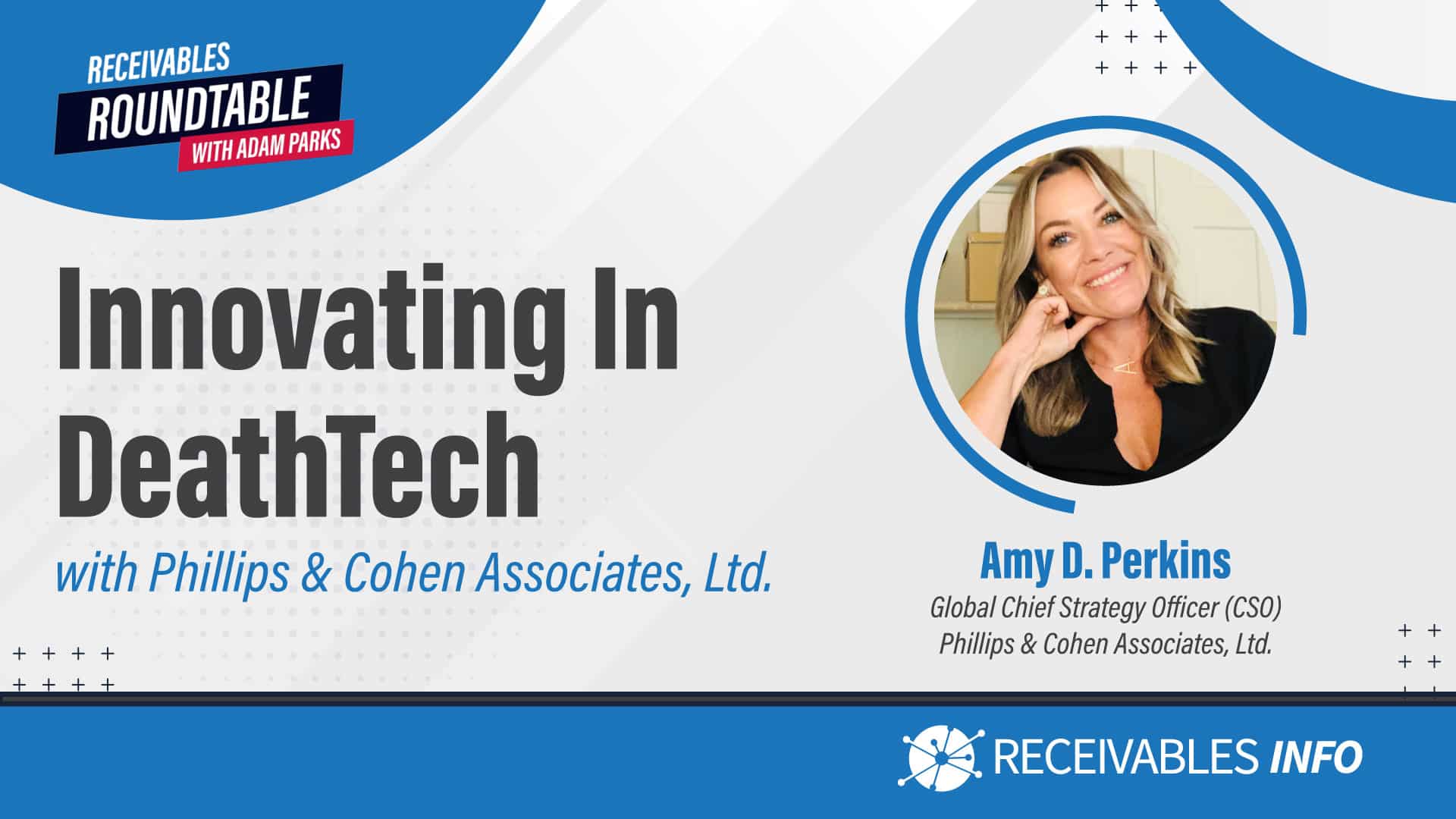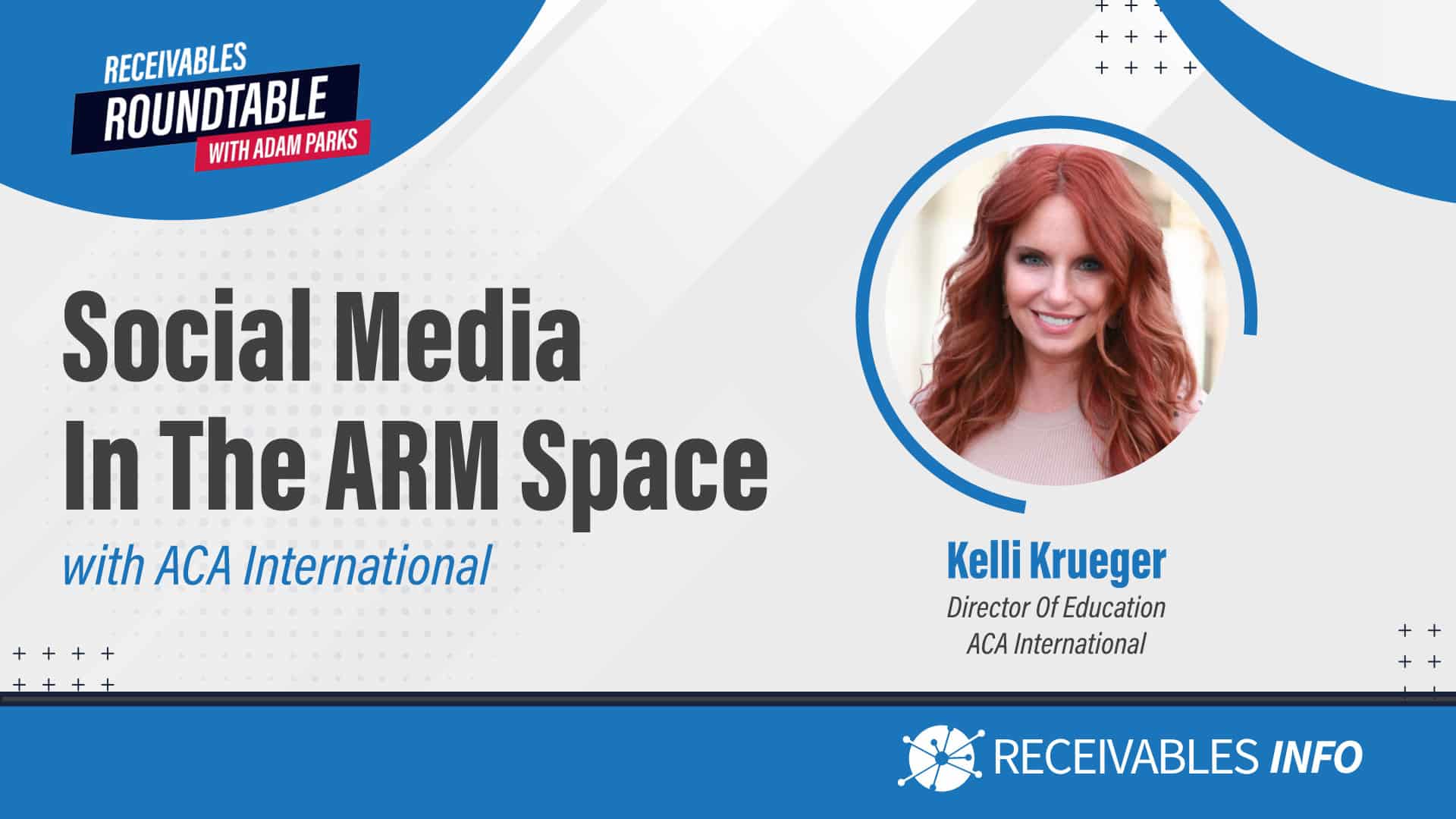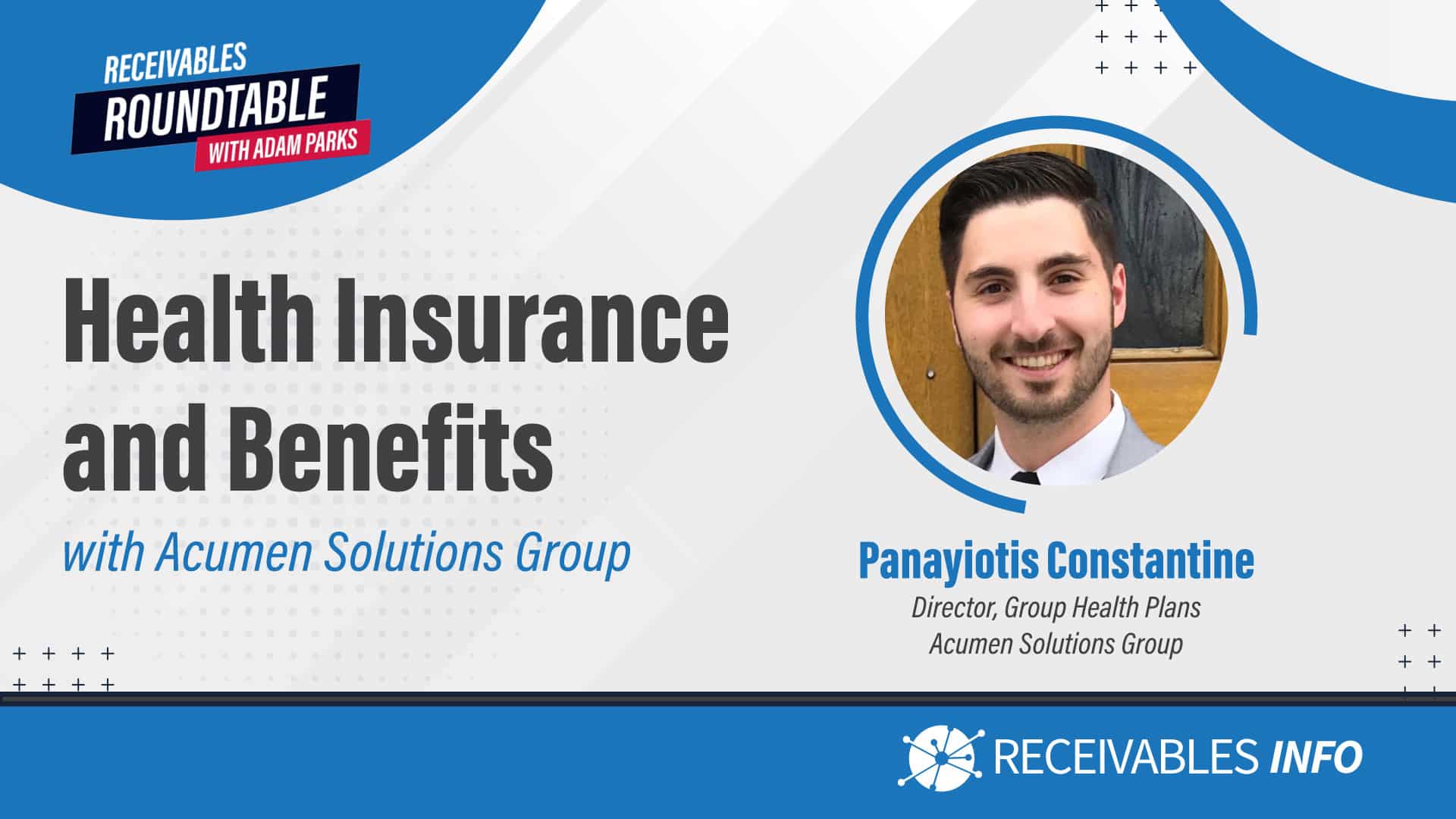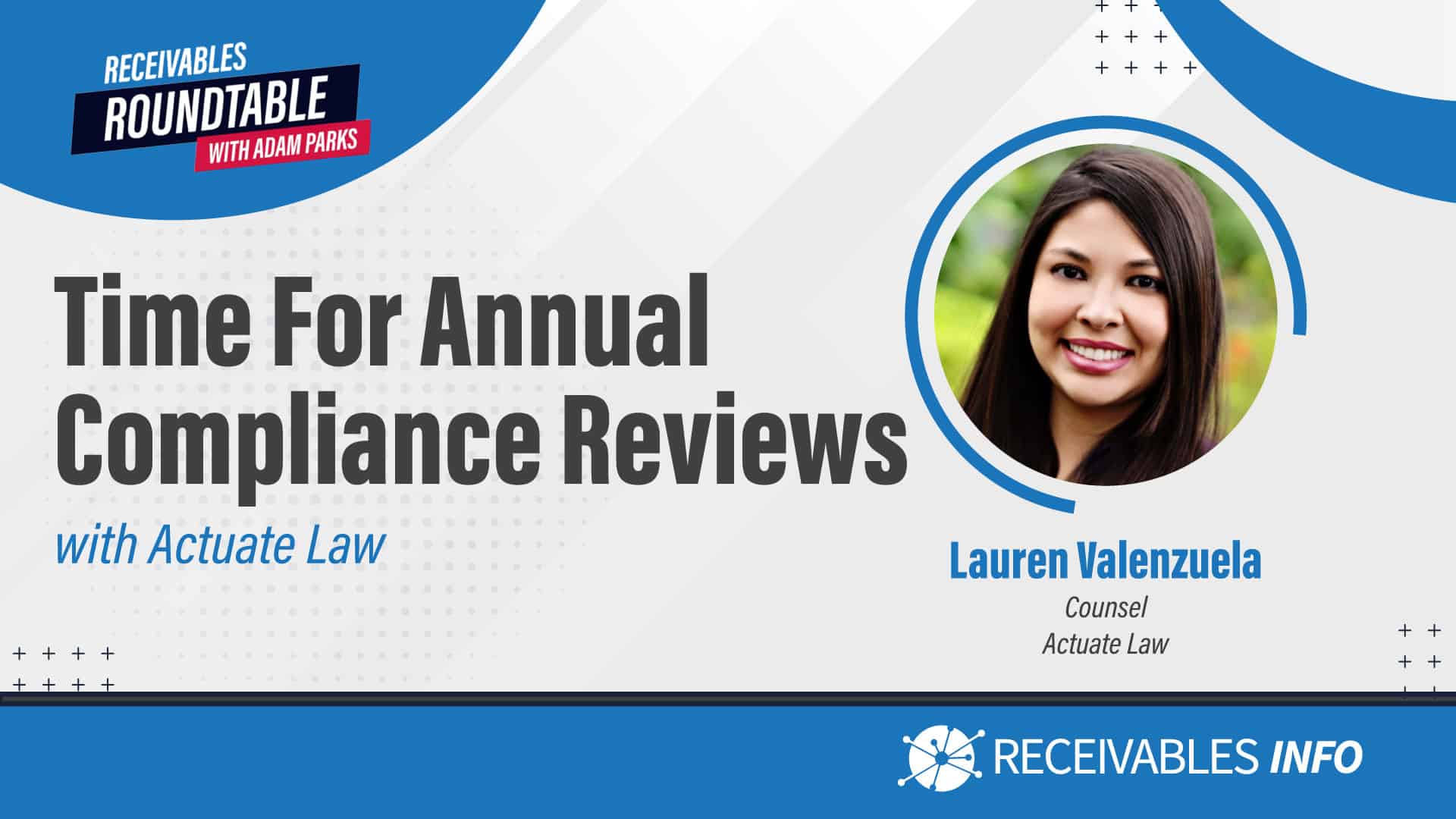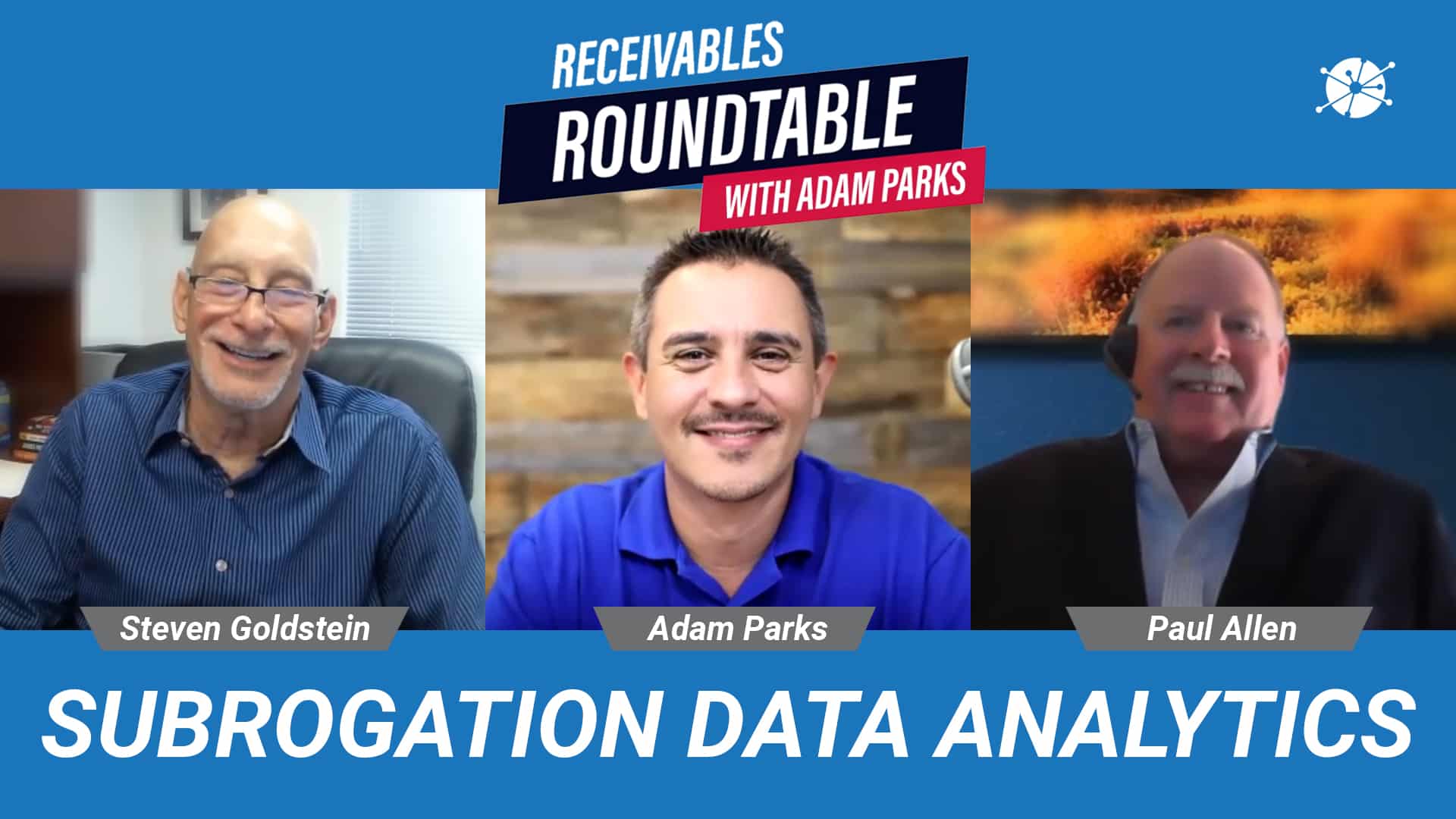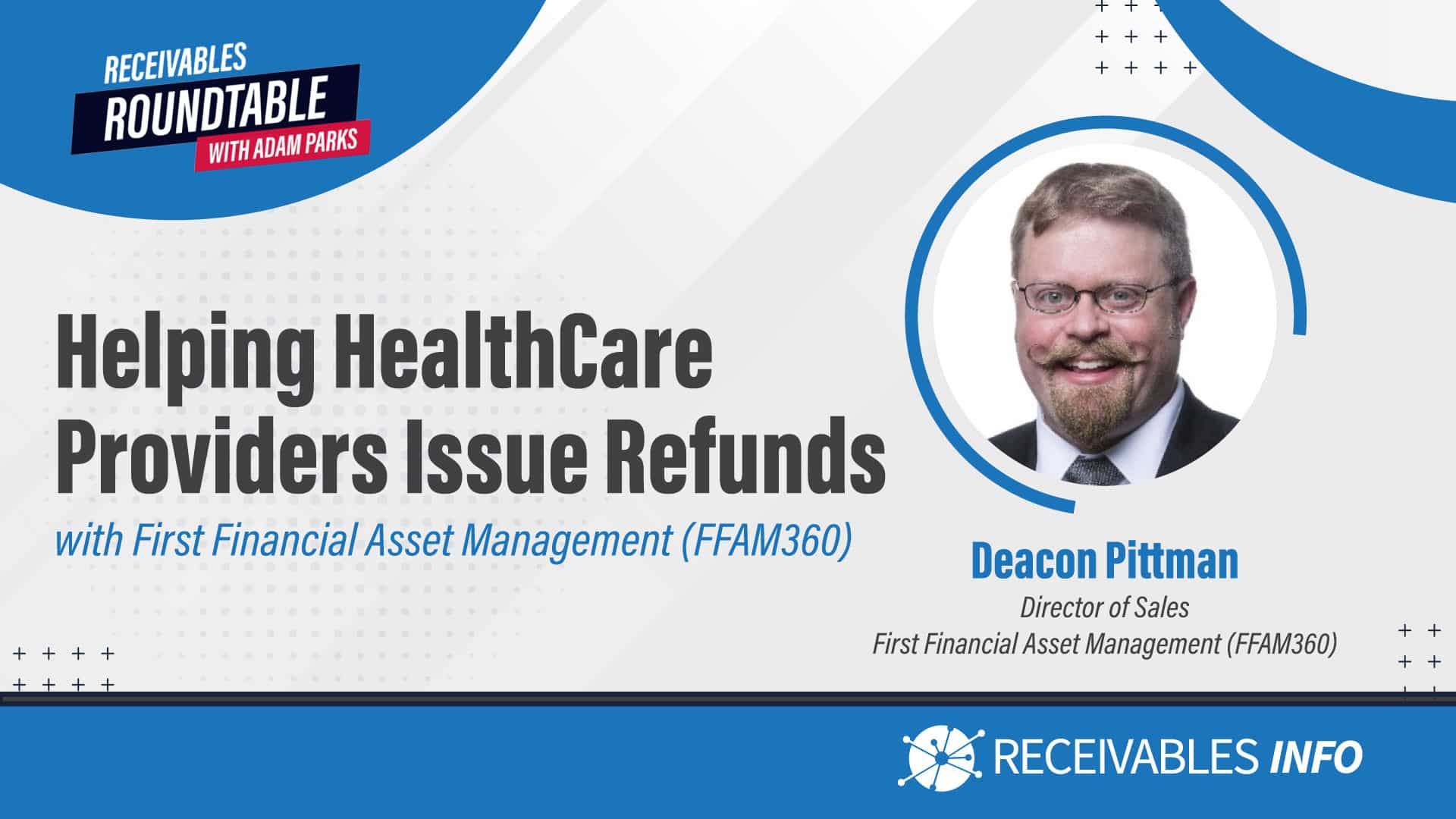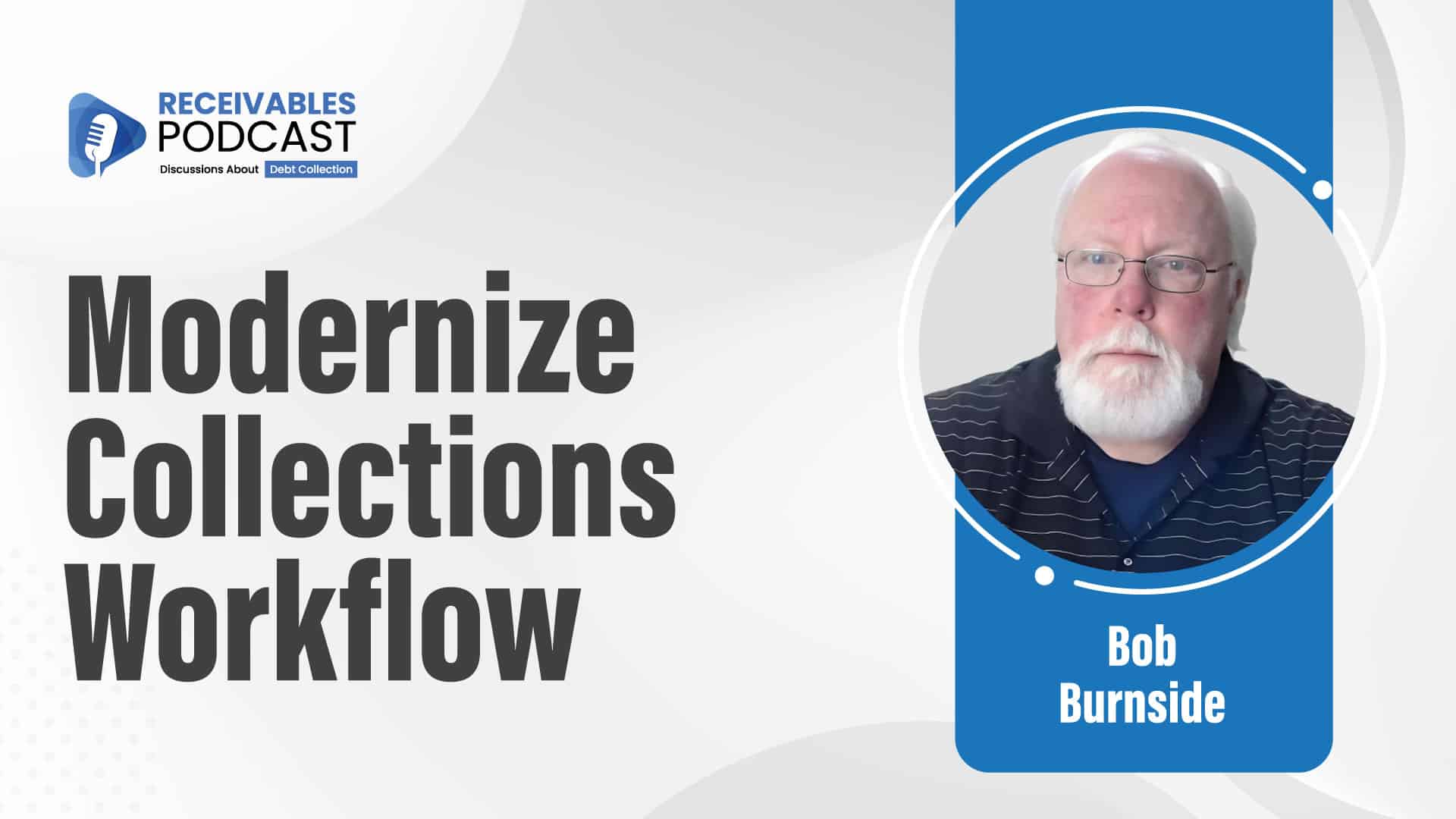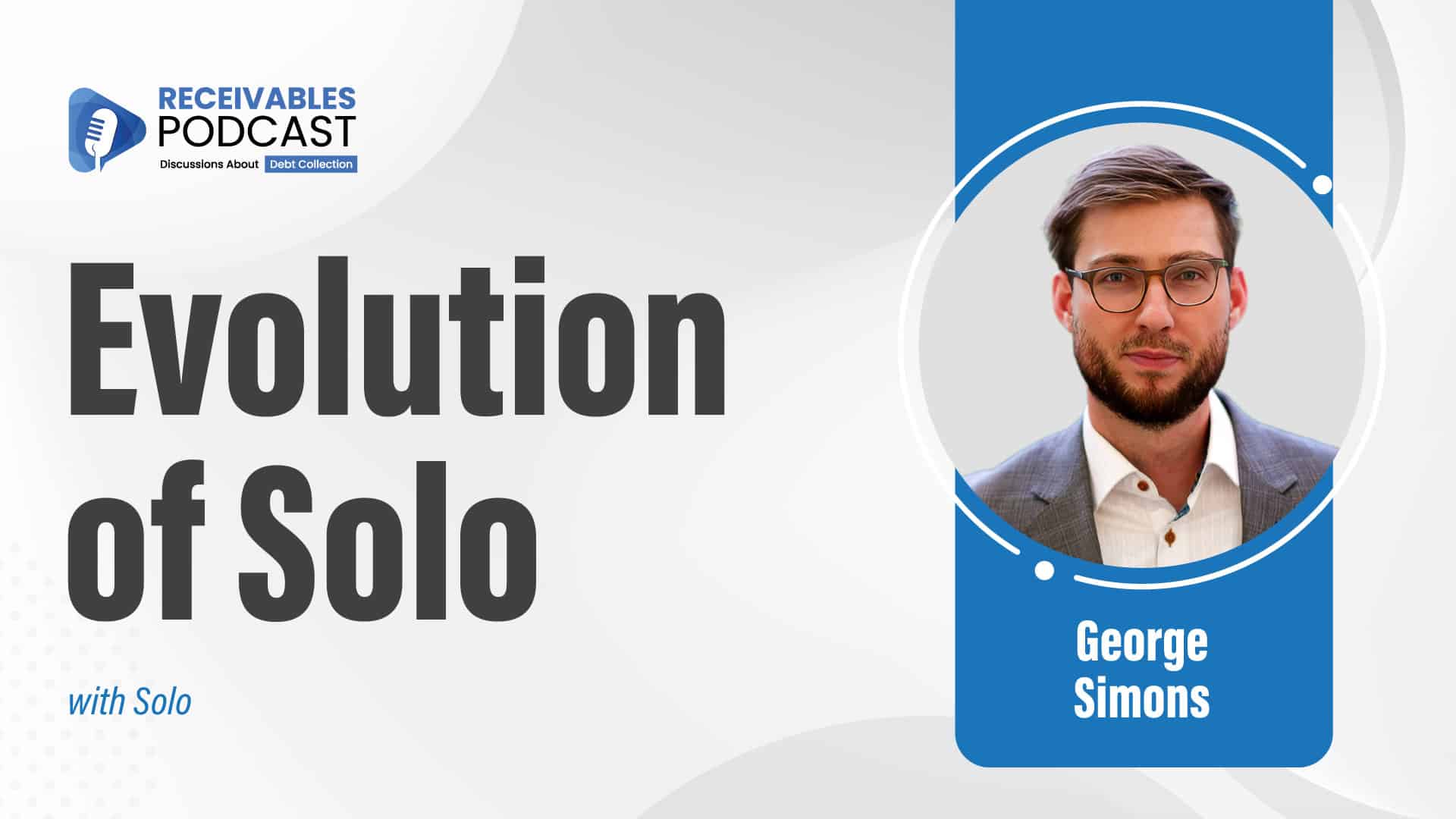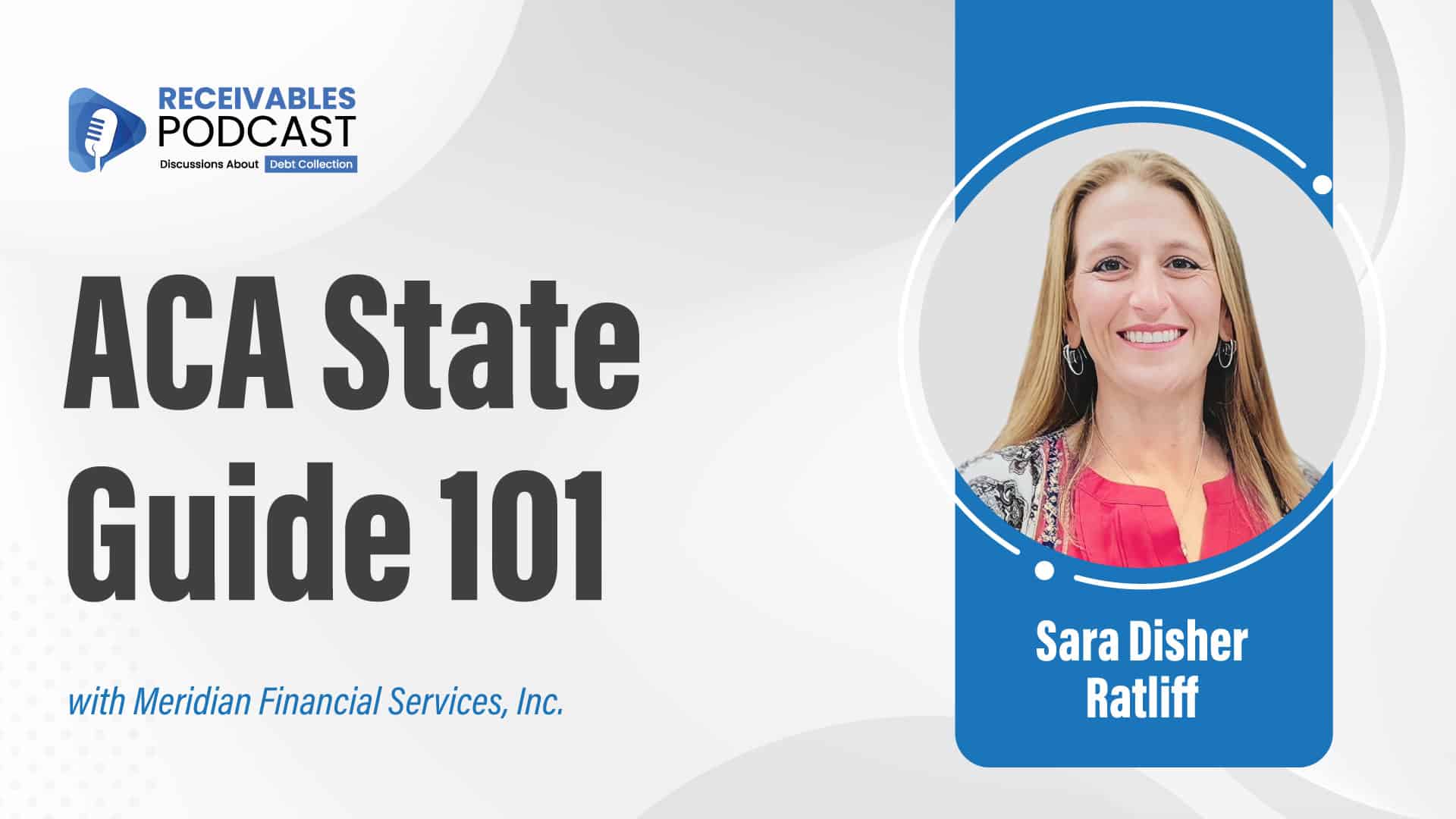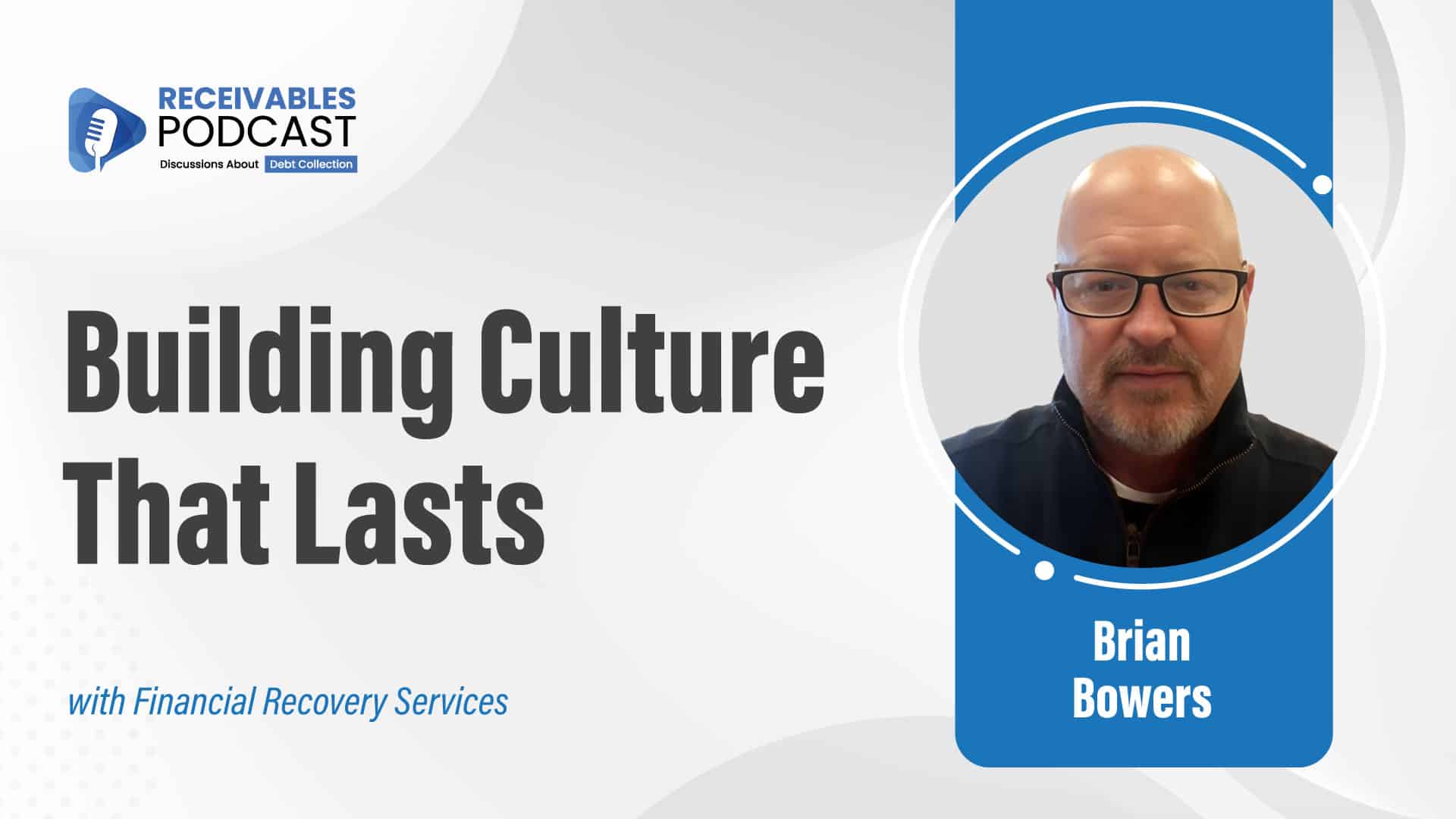Adam Parks (00:08)
Hello, everybody. Adam Parks here with another episode of Receivables Podcast today. I'm here with my good friend and industry legend, Mr. Larry Costa with Capital Management Services here to talk to us today about diversification. And as the debt collection industry has continued to face challenges on the regulatory technology and other fronts as we've converted from a debt collection industry to a customer service first related industry. ⁓
Larry's been very far on the forefront of thinking through these diversification options and modifying his business from a collection agency to a call center, I think is a great way to put that. But Larry, thank you so much for joining me today and sharing your insights.
Larry Costa (00:51)
It's always a pleasure to talk to you, Adam. It's a privilege to talk to you, Adam, because you really are at the pulse of what's going on in the industry. And I appreciate the kind of words, but you and I have had this conversation for many years. To really insulate yourself from any kind of economic disruptions, you have to adopt a diversification strategy. It's necessary. And we've been doing this for many, many years, and it's worked out really well for us. So one of the things that...
Larry Costa (01:17)
as we go through this evolutionary process, is as a third-party collection agency, either principal or higher level executive, you've got to start thinking about what you do, right? And that's how we started. So we said to ourselves, what do we do? We do collections. Who do we collections? We collections for banks. Well, what other products do banks have? Well, they have mortgages. They have customer service. They have all kinds of issues with fraud. They have many, many issues. They have loan verification.
They have all these different functions that they do as a bank. And so what we did is we started to contact our banking clients saying, OK, we have expertise and power to your business. What else can we do for you? Because we're already an approved vendor, so you don't have go through the RFP process. So we started to say, what else we can do for you? And from then, I'm just going to read off a list of some of the things that we were able to accomplish is that the natural was first party collections, which I've talked to you guys about several times in past podcasts, but mortgage customer service.
Larry Costa (02:10)
first party mortgage collections, lost mitigation right within the mortgage. And I'll talk about how this worked within the mortgage framework, lost mitigation. know, checking savings customer service, credit card activation and credit card customer service, loan verification, okay, after hours calling. And then the other thing I said to myself was I looked at my different vendors and I said, well, who do we get health insurance from? So I contact a local vendor, right? Because
Adam Parks (02:32)
You
Larry Costa (02:34)
What happens every year to the health insurance provider is they have to go through what is called a Medicare sign up. Because when you buy Medicare, and typically they to buy a supplemental plan, you go to your insurance provider to do that. And they have these outbound campaigns and inbound campaigns, and they need people. So what I decided to do is partner with these guys. said, look, you sell them insurance. We're already business partners. You're going to need 30 to 50 people every year from end of September until middle of December. You don't want to go out and hire those people.
Larry Costa (03:01)
I've got people who already have skill sets in terms of inbound calls, outbound calls, overcoming objections, all the things that you do in collections. We can do that work for you. So we were successful there. So these are things you've got to start thinking about. know, benefit change is the same thing. So really, what you really want to do is go to your client and say, look, I can be your one stop shop, but let's take it a department at a time. And as you build your skill set and build your confidence,
Larry Costa (03:25)
That's how you grow your business. I don't mean to ramble here, so what happens now is that 44 % of my revenue comes from these customer service first party.
Adam Parks (03:31)
Wow.
Larry Costa (03:34)
revenue streams. But the more important thing is 70 % of my employees are in this field. So what I'm doing, 72%. So what you're doing here is you're taking, right, and Adam's going to help me out here. And I want to just throw this back to Adam, then I'll discuss what digital means. as we get more more digital, the reality is we need less and less collecting agents. And so I migrate these people with the skill set into these first party projects.
Adam Parks (03:41)
You said 70 % of your employees are...
Larry Costa (04:01)
So not only do I increase my revenue base, I preserve my employee base. And I get more revenue on the third party side with less people. And I can increase my revenue on the first party side because that's where I need people. Adam, let's talk a little bit about digital and then we'll come back to this discussion.
Adam Parks (04:14)
So there, I hold it, there's so much to unpack there, Larry, I didn't really pick up on how big the need for diversification was until we were executing on the 2024 TransUnion Debt Collection Industry Survey, and looking at the diversification strategies of debt buyers versus collection agencies versus law firms versus BPO services, etc.
And it became like you and I have been talking about migrating to first party services for some time. And then we did a webinar at the end of last year where we really dug into how debt collection has become a customer service focused business, right. And to have a creditor on there really focused on Hey, look, performance is not my primary objective anymore. The user experience my customers experience whether I'm going to bring that customer back in or not.
Larry Costa (04:46)
Absolutely.
Adam Parks (04:58)
the experience that we're able to provide them even through distress and in post charge off is a primary factor that they're focused on. So it's interesting to see how far out in front of these you've gotten, but the paths that you've taken to achieve that diversification is really incredible that I never really considered the healthcare angle or the fact that so many of those types of organizations, right? So you've got that seasonal.
need. And then you've got a seasonal need from the accounting services that really need people from let's call it January to May to get the scheduling and things done for people to come in and get their taxes filed, which also ties quite nicely into kind of the debt collection world as well. But I had not really considered all of those cyclical moves from a call center need standpoint, and being able to supply that.
Now, you talked about how I think it's 44 % of the revenue is coming from these services now and it's become about 72 % of your staffing needs. So clearly there's a stronger staffing requirement. But what's the most expensive thing in any of our businesses? The people. Hiring, training, recruiting, like getting these people through the door, teaching these people a craft, not just a job, but teaching them a career skill and a craft.
Larry Costa (05:56)
Absolutely.
Adam Parks (06:12)
And then you have to like rather than letting them go as you've shifted into digital, you found new and interesting ways to engage those employees so that they can add value to the organization and you can add value to more organizations. Now, with the shift to digital here, and how you've kind of talked to me about how your organization at the debt collection side of the business has leveraged digital and how that changed your staffing needs.
Larry Costa (06:36)
Yeah, and we're not unique here. Everybody I talked to in the industry, look, we're all texting, we're all emailing, we're all looking at some type of after our chat bots, right, to handle people just want to make payments. So the need for, you know, this is this term called ACR, right, account to collector ratio, where it used to be, I don't know, and depending on the due state anywhere from 300 to 1000. Now, with digital, your ACR requirements in the thousands. So you don't need
Larry Costa (07:02)
amount of staff. Secondly, with all the different dialing and texting, it's mostly inbound work because we're sending the text out, we're sending the email out, we're having them self-service. But they don't want to self-service, they're calling in. So your collectors are much more productive because they're spending their time on true contacts. They're not spending their time doing senseless dialing or, you know, we do transfer on connection. So your people are more productive. They're spending time with the consumer.
Larry Costa (07:28)
and they're making more money. it's really, but again, at the end of the day, all of us want to do as much we can digitally, because that's how the consumer wants to be treated, by the way. They want to reply to a text, they want to reply to an email, they want to go on the website and try to negotiate their own payment arrangements, okay? That's how they want to be treated. So again, instead of having a core endpoint for these people, we're going to continue to deploy digital, we're still going to make phone calls, and we're still going to keep on staff to answer questions.
Larry Costa (07:55)
But now these people have a new career opportunity. And it's a less stressful career opportunity. So I mean, it's
Larry Costa (08:00)
First party collections, customer service type of work, it's a less stressful. We've been spending, we do, after always calling for banks, again, you go back to your bank, say, hey, look, what do you do from eight o'clock at night till six o'clock in the morning? Or why do you want to open your call center at six a.m. if you come six a.m., have them come in at eight? We'll hand your calls from eight at night to eight in the morning. Again, and the banks appreciate that.
And by the way, you can build a pretty good premium. The margin and overnight activity is pretty substantial. So again, that's what we talked about earlier. You've already got the skillset there. You already got the agency know how to handle inbound calls, on-air calls, know how to deal with objections. And because the collection industry has changed, know how to be empathetic. You move that skill set into the more the customer care world. So you redeploy people, you give them a long term career. The people that want to stay in third party collections have greater earning opportunity because they're only handling calls, you know, from people that want to talk to them.
Larry Costa (08:46)
versus being stuck on a dialer all day long. it's working out pretty well. But it's still going to change. Adam, you're more on the pulse of this. There's AI, which we're all struggling with. What's that going to do? Are we going to have the true virtual agent? I don't know. What's your opinion, Adam?
Adam Parks (09:00)
You know, that's a really good question. Are we ever going to have the truly virtual agent? And I think right now what I'm starting to see from a technology standpoint is that everybody, you'd mentioned everybody can send out a text message, everybody can send out an email, but not everyone can send out the right text, the right text message, the right email, the right communication, the right content for that communication at the right time. And I think the differentiator
three years ago was can you send digital communications or not? And now the differentiator has become your strategies. So what strategies are you actively deploying? What's your content library look like? And how are you able to marry together the strategy and the content that's outbounding? And that's where I see the differentiator happening. As you were talking about the account to collector ratio dropping, but the profitability of an individual
rising, I find that to be I hadn't really considered that before. But as we've gone to digital, and you can actually manage more accounts with the same person, right? So that's the first piece. But now that that person who's handling those more accounts isn't just about managing volume, it's about managing quality. And if they're able to actively collect more, because they're spending more time engaging with a right party contact than they are chasing.
a right party contact and having to skip and try and find that person. I think as we've in is we've instituted more data, and we've brought more data into the methodology, we've been able to improve those contacts from a digital standpoint. And if your digital strategy is truly differentiated as an organization, then it really would free up a significant amount of time.
And sounds like you're using less than 50 % of the people, but it's now driving almost 50 % of your results. Now customer service takes longer in his price differently than debt collection. And it's I think it's interesting to see how that migration has happened across your organization, because you've been at this for a considerable period of time, I want to say it's been 10 years now, that you've been looking into the future and saying we're going to need to evolve as an organization in order for us to
Larry Costa (10:55)
Absolutely.
Adam Parks (11:12)
be able to continue the sustained growth that we're looking for. And I think a lot of organizations are just getting to that point in the last 12 to 18 months. One of the challenges that they're facing is the rise in the volume of accounts and the decrease in the liquidity of those accounts simultaneously. So we're being forced to do more with less from a debt collection standpoint. And, you know, 10 years ago, the solution to that would be
throw bodies at the problem, right? Throw people at the problem, we're gonna dial more, we're gonna talk more, right? It was always, I'm gonna say a brute force solution to the on the phone problem. But that's no longer, not only is that not the case anymore, it doesn't work. Because I can tell you right, like since we've been on the phone here, Larry, I've had four spam calls that have come through to my phone that I can see are happening right here. All four of them have been blocked by RoboKiller.
Larry Costa (11:54)
doesn't work at all.
going to engage on your
terms. You're going to engage in your terms. You get the text, you might go to the site, okay, fine, maybe register, and then you'll do it on your terms. It's the same thing with email, right? And you have the ability to opt out. And once you're opt out, you're not going to get another text, or you're not going to get another email. So it really gives you more of a sense of control. And that's what we're seeing in the consumer. once you're getting back to the point you're making is that, right, we are going to get more volume.
Larry Costa (12:26)
And we really haven't got the huge volume increases that everybody was talking about, but we're getting some more value. But we're handling digitally. We're using technology. Everybody is, and it's not just us. Everybody's using technology. You still need an agent. There's a lot of digital-only collection agencies that have not seen the success that they thought they were going to receive, because you still need an agent that's trained. You need an agent that only handle executives. You need an agent that offer settlement programs.
Larry Costa (12:51)
A lot of what we're seeing now is settlement over time. So person owes $6,000, they don't have it, they're not going to the 401k, but maybe they can do a $3,500 settlement over three years. So now you're looking at what, $100 a month? People can understand that. People say, hey, now I got a way out. I can't get to the $6,000, I can get to $3,500 a month, 36 months.
Larry Costa (13:14)
or whatever, 200 for 18 months, whatever the case may be. So that becomes a path. And we're seeing a lot of that. And the nice thing about building a payer base is that it gives you, and you start the month off with guaranteed revenue. So when you talk about the risk of the case, you have to guarantee revenue from first party, because you know how many seats you need that month. You've got a pretty good payer base that's somewhat guaranteed revenue. So now you put yourself in a revenue stable, because you know before the month starts approximately what you got coming in.
Adam Parks (13:18)
Yeah.
Larry Costa (13:42)
And the new revenue you create, either by expanding, getting more seats on the first party side or the customer service side or being successful campaigns digitally or old school way, that's how you build your revenue. But you have to take a portion of that revenue, continue to invest in the technology. You always got to invest more and more in technology. You got to make your website better.
Adam Parks (14:02)
you know that I find interesting when you talk about the way that the consumers are behaving in terms of these longer term settlements is that consumers have become significantly more comfortable with subscriptions and consumers are buying just about everything based on payments. I mean, look, you can even look at the buy now pay later financing of like Uber Eats and DoorDash, which I think is irresponsible lending. I think it's irresponsible lending. However,
Larry Costa (14:24)
Crazy. Yes.
Adam Parks (14:27)
I do notice that consumers are very focused on buying the payment these days. So if they can't make that $6,000 settlement payment, and they can't pay you that balance in full right now, payments is where they tend to go. I don't know when the last time you went into a car dealership to buy a vehicle, but trying to get them to tell you the final price of the vehicle is probably the hardest thing that I've done in the last year. Because all they want to talk to me about is my payment. I'm going well, what if
Larry Costa (14:39)
Absolutely.
It's insane.
It's insane.
Adam Parks (14:54)
What's the interest rate on this loan? What is the final purchase price of this vehicle? They don't want to talk about anything but the payment, which tells me that that's what the consumer is buying.
Larry Costa (15:03)
I mean, I ask them for the money factor on the lease. They look at me like something wrong with me. money factor is what's the interest rate? That's what it means, because it's not free. But yeah, it is. And I lease cars because, as we all know, it's depreciating asset. And what you're doing when you buy a lease is you're basically paying off the depreciation. That's what you're doing. That's all you're doing. You're financing the depreciation.
But you're right, consumers are buying a payment. They're trying to find a number that can fit in their budget. Because if you've got a consumer that's willing to resolve it, they want to resolve it. The day is the same. Well, just give me $50, $50 a month. That's not effective anymore, because that payer is going to break. He's just doing that to get you off the phone, which you really got to do. And that's why, as I said, the agents that remain are more highly skilled. They know they're going to be dealing with people who
Larry Costa (15:47)
or contact them, but pick them up the phone. So now they can go out and really negotiate a solid arrangement. And that's why, even though it's, 28 % of my employee base, it's 56 % of my revenue. the third party's, yeah, the third party's, I'm not anybody shape-for-shape saying abandon third party. Third party pays the bills. But by having this diversification strategy, OK,
Adam Parks (15:58)
Skill.
Larry Costa (16:07)
You set yourself up for covering your fixed costs. And now the revenue generated from the third party not only contributes to the variable costs, but it also contributes to your margin. And that's what makes you a healthy company, is having that balance.
Adam Parks (16:19)
I would think it would be pretty significant. And as you've gone digital and as things have started to your need for staffing has retracted on the third party side, you still have the infrastructure, the phones, the cubes, the office space, the facilities, the programs, the HR, right? Like all of those fixed costs that go with running that call center are not going to reduce significantly. So you'd still have this heavy, right? Like you'd still have this heavy overhead.
Larry Costa (16:40)
Right, still there. No, they're not.
You a fixed cost.
Adam Parks (16:47)
⁓ fixed costs that you've got to manage.
Larry Costa (16:49)
Absolutely. No, I agree. again, that's again, that families.
Adam Parks (16:50)
So moving it
into a customer service aspect.
Larry Costa (16:54)
I'm sure you cover that cost. mean, got to, know, more and more of our clients are requiring in-office anyways. A lot of the issuers are pushing back when you come to the office. Not all of them, thank goodness. So we're probably, it's a pretty good mix. It's maybe a 50-50 mix of in-office and at home. The advantage at home though, as long as you expand your recruiting reach. You know, can recruit in Pennsylvania, recruit in Ohio, you know, because they're...
Larry Costa (17:19)
It's lower minimum wage there. our initial offer is attractive. And you can be $4 $5 above the minimum wage. That helps you attract people.
Larry Costa (17:28)
Now.
Adam Parks (17:29)
Well, and I think finding
everybody in one locate one geographic location has become more challenging. And that's been the push for organizations to do the work from home or to start leveraging BPO services and other, you know, or opening offices and new geographic locations because recruiting and retention has been very difficult. 88 % of companies are having trouble hiring 81 % are having trouble retaining the people that they hire. And I think when we're talking about collection specifically, that number is
Larry Costa (17:35)
No.
right, very expensive.
Adam Parks (17:57)
probably higher than it would be if it was customer service base and the end user or the employee who's on the phone is under significantly less stress in a consumer customer service environment than they are in a third party debt collection.
Larry Costa (18:13)
The other thing about first party collections is that as these agents become more more skilled, some of actually migrate back to third party because in first party work, there's very little variable compensation, pretty much a desk fee. Now, some of our clients offer a small bonus price about hitting certain KPIs. So that helps the agents. But a lot of these agents will migrate back to the third party world because with some issuers, we do both.
So as they become proficient in first party, they've been there for a while, they'll migrate into third party because they're already familiar with the product. And the good thing about it, because we're using digital technology, because we're performing very well for our clients, we are expanding. We are getting more inventory based upon market share. So I am actually hiring people in the third party stage. But again, I can draw from my first party people and backfill in first party, or I can just hire third party collectors. So we are experiencing some growth. But again, it's not the
I don't need to hire 20 people. Maybe I can hire a dozen, half a dozen. Because with six people, I can handle 10,000, 15,000 accounts.
Adam Parks (19:08)
And what advice would you have for a creditor who's looking at expanding their relationship with an existing vendor? What advice would you give to them in terms of taking on that process? Not from your perspective, but from your customer's perspective.
Larry Costa (19:27)
Well, I think it's easy for my customers. I mean, it really falls upon the vendor to form the creditor of the additional capabilities that they have. I mean, you're already approved. I mean, all of us have been through creditor RFPs. They're no fun. they take, look, the sales cycle and creditors, minimally 12, 18 months. You got an existing creditor. It's incumbent upon you to articulate to your creditor what their requirements are. But you got to look at
What's the most important thing for anything? It depends on the issuer, right? For some of these regional banks, I have some pretty large regional banks, mortgages are bread and butter. Not only do they originate mortgages, but they service mortgages. So to be able to go into a system of mortgage servicing, mortgage collections. so within mortgage, have different, just like the collection of different news stages, different events that occur. Obviously, you want to keep people current. So that's first part of mortgage collections.
Larry Costa (20:15)
What happens after that is the whole foreclosure process. And they have a process they have to go through. And they have a thing called SPOC, Single Point of Contact. And we do that work for one of the mortgage servicers. We're actually communicating with people, and you're trying to get them, hey, look, if you don't make this payment, we're going to have to look at a short sale or foreclosure or some other things. So let's start this process.
And sometimes it does lead to a short sale because, again, those are skill sets that banks require. But if you can provide it to a bank, along with your mortgage collection capability, it just gives you value add. Again, the advice to third-party collection agencies, you've got the skill set. You know how collect the money. You know how to handle inbound and outbound calls. You know how to be empathetic. Go talk to your issuers about working in other capacities. Again, they all outsource lot of these services.
And that's what we did. We just went to our issuing clients and we took them. The other thing we do is episodic work. Episodic work is really tricky, but it's really lucrative.
Adam Parks (21:09)
fair th-
Well, because banks are built
to lend money, underwrite that money and service those loan accounts.
Larry Costa (21:17)
Right. But episodic work, they acquire another bank, OK, or they acquire a portfolio. They can't ramp up quickly enough. So you become their episodic partner. You hire people you're going to charge a premium for 90, 120 days. And you do that. So you go out and you recruit some people. And again, nice thing about it is that the top performers, you keep into your own organization. The ones that don't perform that well or they just don't need any more, then they go back into the temp field.
Larry Costa (21:43)
You're going to be able to charge a significant premium for episodic And banks are always looking for people to do that work. We do a lot of work for banks in that aspect because they acquire some money, they acquire a large portfolio. They simple things like welcome calls. You call up and welcome them to the new bank because they don't know who we are. They want to know, we're servicing your mortgage now. And by the way, do you want to set up automated payment? I mean, it's all the stuff we know how to do. So those are all the things that you can look at with your issuing clients.
Adam Parks (21:44)
you
Larry Costa (22:08)
And they're willing to those conversations.
They have the need.
Adam Parks (22:11)
Larry, it sounds like you've done an incredible job of taking a skill set or a craft in the individuals that you've developed in your organization and found new and interesting ways to deploy that craft to assist your clients in a variety of different ways. And I think that's the the key to diversifying a collection agency in 2025 and beyond.
is finding those opportunities, leveraging those skill sets in new and interesting ways, and using it to drive revenue. I really like the way you talk about the cyclical cycles that some of the creditors are going through or different health insurance organizations are going through, and those seasonal needs and how you can start to close the gap on those seasonal needs and kind of find a nice ebb and flow for your own organization. But as always, Larry, I really do appreciate you coming on and sharing your insights with me today.
Clearly been at this for a long time and you've been doing some great things and on the forefront of diversifying your collection agency. So I really thank you for coming on and sharing with me today.
Larry Costa (23:13)
Always enjoy talking to you. One of these days we got to go to South Florida though. We got to make that happen, my man.
Adam Parks (23:18)
For those of you that are watching, if you have additional questions you'd like to ask Larry or myself, you can leave those in the comments here on LinkedIn and YouTube and we'll be responding to those or if you have additional topics you'd like to see us discuss.
Larry Costa (23:27)
Great talking to you as always, my man.
Adam Parks (23:29)
I look forward to it. If you see any other topics you'd to have us discuss, you can leave those in the comments below as well. think Larry and I are off a little bit on our ⁓ digital sync at the moment here, but I'll get this cleaned up in post. But thank you everybody for watching today. We really do appreciate your time and attention. We'll see you all again soon. Bye.
Larry Costa (23:46)
Thanks again, everybody. Bye bye.
Adam Parks (23:47)
I appreciate you, Larry.
Larry Costa (23:48)
Take care, brother. Talk to you soon.
